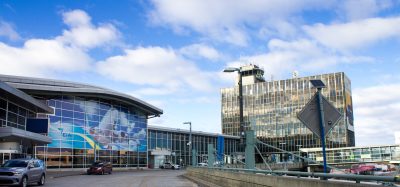DIA – Achieving balance in winter operations
- Like
- Digg
- Del
- Tumblr
- VKontakte
- Buffer
- Love This
- Odnoklassniki
- Meneame
- Blogger
- Amazon
- Yahoo Mail
- Gmail
- AOL
- Newsvine
- HackerNews
- Evernote
- MySpace
- Mail.ru
- Viadeo
- Line
- Comments
- Yummly
- SMS
- Viber
- Telegram
- Subscribe
- Skype
- Facebook Messenger
- Kakao
- LiveJournal
- Yammer
- Edgar
- Fintel
- Mix
- Instapaper
- Copy Link
Posted: 7 February 2009 | John S. Kinney, Deputy Manager of Aviation/Operations and Public Safety, Denver International Airport | No comments yet
It’s a well-kept secret that most locals want to keep from outsiders: although located close to the foothills of the Rocky Mountains and a mile above sea level, the city of Denver doesn’t get as much snow as many non-residents assume. With 300-plus days of sunshine annually, what snow does fall usually doesn’t stay on the ground for long. But when big snowstorms do hit, they hit hard. That was the case of the blizzard season in 2006 that closed Denver International Airport (DEN) for two days just before Christmas.
It’s a well-kept secret that most locals want to keep from outsiders: although located close to the foothills of the Rocky Mountains and a mile above sea level, the city of Denver doesn’t get as much snow as many non-residents assume. With 300-plus days of sunshine annually, what snow does fall usually doesn’t stay on the ground for long. But when big snowstorms do hit, they hit hard. That was the case of the blizzard season in 2006 that closed Denver International Airport (DEN) for two days just before Christmas.
We are using lessons learned in 2006 to completely revamp the airport’s snow-removal plan for the start of the 2008/09 season. The revisions include an overhauled procedural plan, a fleet of 40 new snow-removal vehicles at a cost of $29 million, and plans to add more equipment in the near future.
Occupying an area twice the size of Manhattan Island and larger than the city boundaries of Boston, Miami or San Francisco, Denver International Airport poses a daunting challenge to effective winter operations and snow removal. A team of full-time and on-call volunteer staff is responsible for ensuring that the 5th busiest airport in the United States and the 11th busiest worldwide remains operational during the snow season from October through to May. Both the size and configuration of the team and its fleet of snow-removal equipment have been changed since a blizzard forced the closure of Denver International Airport for two days in 2006. The goal is to avoid repeating past mistakes and to optimise and modernise processes.
With a 152 arrival rate per hour during Visual Flight Rules and a 128 arrival rate under Instrument Flight Rules, Denver International Airport handles 1,700-1,800 aircraft movements and 136,000-plus passengers on an average day. During the blizzard season that shut the airport down in 2006, DEN got hit by 22 inches of snowfall over the 35-hour duration of the storm. Whereas a normal winter season sees an average of 61 inches of snow, the 2006 snow season saw over 70 inches in total. Accompanied by 50 mph winds, freezing rain and fog and near zero visibility, the pre-Christmas storm eventually forced the closure of all the runways. Airfield activities were finally paralysed by man-sized drifts of snow that trapped aircraft at the gates and stopped taxiing airplanes in their tracks. It took 22 hours after the snow stopped and tens of millions in losses to airlines and the airport alike before DEN was able to reopen.
Following the December 2006 blizzard, Denver International Airport initiated a five-year plan to totally overhaul the snow-removal programme, as detailed in Issue 4, 2007, of International Airport Review. The ‘DIA Snow Plan’ calls for creating a responsive and sustainable snow programme for the airport, as well as analysing every aspect of staffing levels, equipment types, crew schedules, and snow-removal priorities. DEN conducted several months of benchmarking at other large hub winter ops airports around the country and even hired a consulting firm to provide new perspectives.
So, what’s changed? As the ‘DIA Snow Plan’ moves into its second year, over 100 substantive changes have already been made: the most critical focus on equipment, procedures and staffing.
Modernising the snow-removal equipment fleet with multifunction machines
To prepare for the 2008/09 winter season, DEN has made its largest purchase of snow-removal equipment since the airport opened in 1995. Previously, a fleet of around 52 vehicles was employed to keep DEN’s six runways (four north-south and two east-west) and associated taxiways, together with the ramp areas surrounding the airport’s three concourses and Jeppesen Terminal, free of snow and ice. Five of DEN’s runways are 12,000 feet (3,658 metres) long and 150 feet (46 metres) wide. The airport’s sixth and newest runway, 16R/34L, is 16,000 feet (4,870 metres) long and 200 feet (60 metres) wide. That’s a total runway area of 12,200,000 square feet (1,133,417 square metres or 280 acres) and 15,463,800 square feet (355 acres) of ramp area that must be cleared of snow and ice.
In the past, crews needed 45 to 50 minutes to clean one of these runways and its associated taxiways because they were using several machines, each with a unique function, such as ploughing, sanding, snow blowing or chemical spraying. By purchasing new multifunction machines that can combine all of these functions into one vehicle, DEN has halved that time to 20-25 minutes. The new multifunction machines will complement, but not completely replace, the existing fleet, and the airport has purchased the equipment from both domestic and European manufacturers.
Sixteen of the 40 new multifunction vehicles are from Swiss manufacturer Boschung, and cost around $29 million altogether. Denver International Airport purchased the other machines from U.S. manufacturers Oshkosh Truck Corp. and M-B Companies. Seventy-five percent of the cost of these machines was covered by the FAA because the equipment is U.S.-made. DEN will be adding eight more Boschung and two more Oshkosh/M-B Companies machines later in the season, with the cost of the new equipment expected to be offset by a dramatic reduction in snow-removal time and the costs associated with delays. The airport has also altered how it conducts ramp ploughing and snow ops: in 2007, DEN contracted Aero Snow Removal Corp. to take care of snow removal on the ramp, a move which included increasing its fleet of ramp snow removal vehicles from the former 16 to 60. The new fleet also includes 10 new snow melters, which in the first season alone led to marked improvements in snow removal.
Forty percent of Denver International Airport’s snow-removal equipment (not including the newly purchased machines) had an average age of 16 years and was nearing the end of its useful life, so DEN’s snow programme required a significant investment regardless of which plan the airport finally settled on. The ‘DIA Snow Plan’ has now created guidelines for ongoing and future investments in the equipment fleet, to avoid being caught with either insufficient numbers or types of snow-removal equipment during future blizzards.
Achieving balance – Core components of more systematic procedures and staffing
Key elements contributing to the shutdown of DEN during the 2006 blizzard were poor communication and coordination, not only within the airport team itself, but between the airport and its external partners, including the FAA, airlines, contractors performing snow-removal services, and other external agencies. The 2006 blizzard was indeed, a perfect storm: heavy snowfall rates over a short time period, accompanied by strong winds and low visibility, inaccurate forecasting of both the severity and duration of the storm, and timing of the storm during the busy holiday travel week. DEN has revamped its communication and coordination procedures, both internally and externally, to include new communication solutions:
- ‘Snow Man’ and ‘Ice Queen’ – Placing an Airport Operations staffer in the FAA tower
- Pre-and post-event critiques with stakeholders
- OPSnet – a virtual snow desk featuring Web-based communication for airlines, FAA, and the TSA
- FAA coordination – local, regional, and command centre
- Pre-season coordination with airlines, the FAA, and aircraft deicers.
The ‘DIA Snow Plan’ prioritises removal and deicing of runways first, then all taxiways, emergency response routes, deice pads, ramps and vehicle service roads. This includes implementing new priorities for clearing surfaces, as well as developing strategies to reduce snow crew runway occupancy times to maintain a better balance of arrival and departure flows. Other elements of achieving balance include efforts to maximise the throughput of de-icing operations, and ensuring that staffing and equipment levels reflect weather and climate conditions.
Staffing procedures have also been changed. Before 2006, DIA used a full conventional snow team of around 110 pieces of equipment to clear the entire airfield. With the purchase of the new multifunction equipment, the size of the snow teams has been reduced to 81 pieces of equipment for the same task. In a 24-hour period, DEN now uses 200 pieces of airside field maintenance equipment (not including the Aero Snow Removal Corp. equipment).
Two years later
Just two years after the major blizzard brought operations at Denver International Airport to a standstill in 2006, more than 100 important changes have been made to DEN’s Snow Plan. This plan dictates winter operations at the airport, and spells out how snow removal will be organised and performed. Although the Winter 2007-2008 season saw only 40 inches of snow, compared with over 70 inches that walloped DIA in the 2006-2007 season, it nevertheless had 27 snow alerts and 22 ploughing events (versus 35 ploughing events the previous year). The previous season allowed DEN and its stakeholders, airlines, the FAA, and other external partners to test the new Snow Plan and prove its efficacy. It allowed us to learn and implement the following:
- Further development of metrics – decisions based on data and not on estimates or presumptions
- Tracked and reduced runway occupancy times for snow crews – the previous 45-90 minutes was reduced to a predictable 25 minutes
- Balanced flows to maximise capacity – more frequent coordination with the FAA Command Centre to facilitate metered arrivals and departures that were complementary to demand in order to minimise delays
- The creation of an MFE Procurement Process – a Critical Path Study instituted after the 2006 blizzard made the case for the value of multifunction equipment to minimise runway occupancy times, improve safety, minimise operational costs to the airlines, and reduce staffing and equipment numbers and delays.
As we move through the second season of our five-year plan to reinvent and modernise the Snow Plan, major challenges remain. These include; corporate culture, new leadership, internal and external cooperation, and rising operational and maintenance costs. While no snow plan can completely trump Mother Nature, we believe that with the improvements and changes which we’ve made to our snow plan, a storm the magnitude and type of the 2006 blizzard might indeed still force us to close the airport down in the interest of the safety of our passengers, airlines and employees, but for only six to eight hours instead of 41 hours.
















